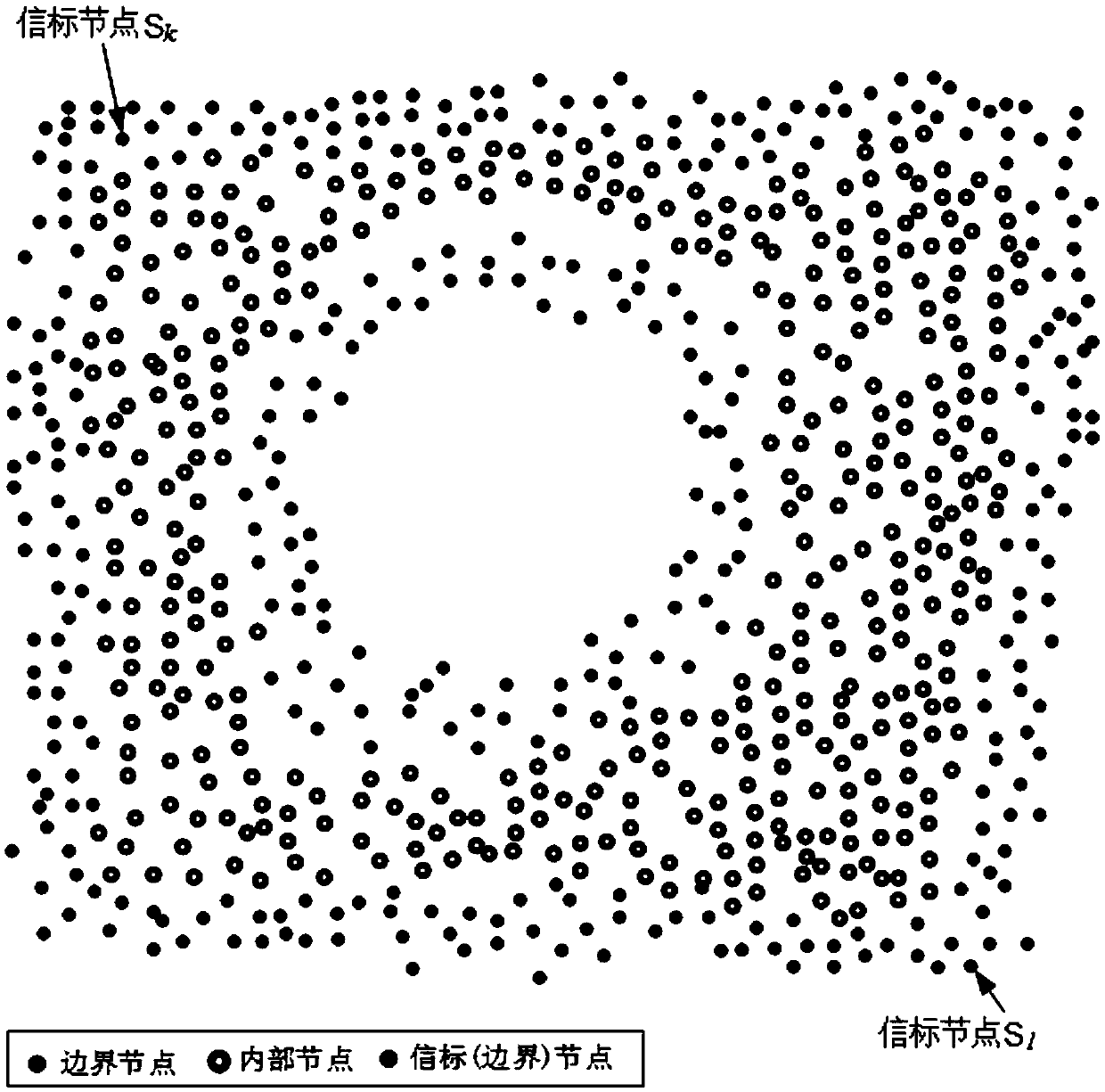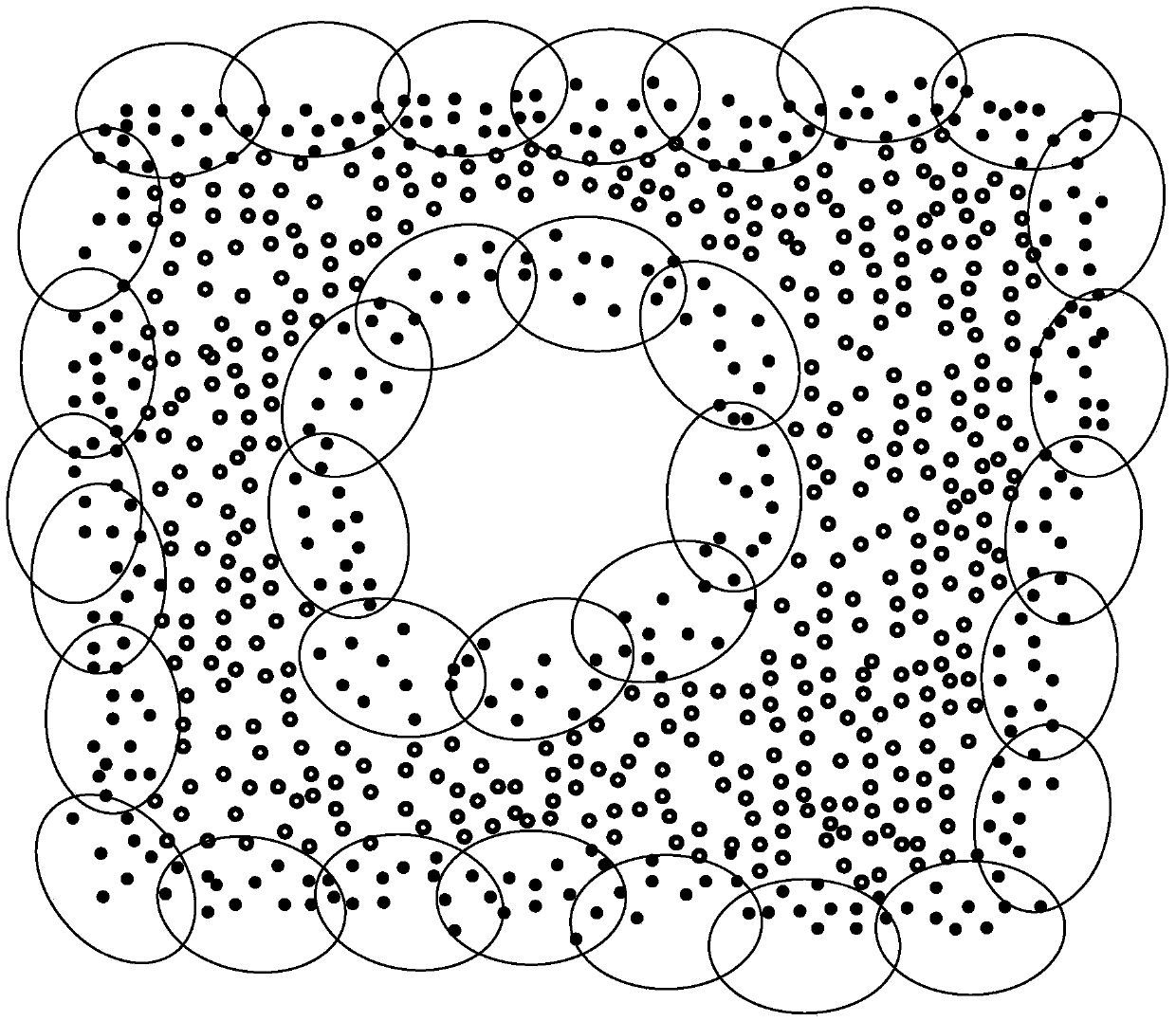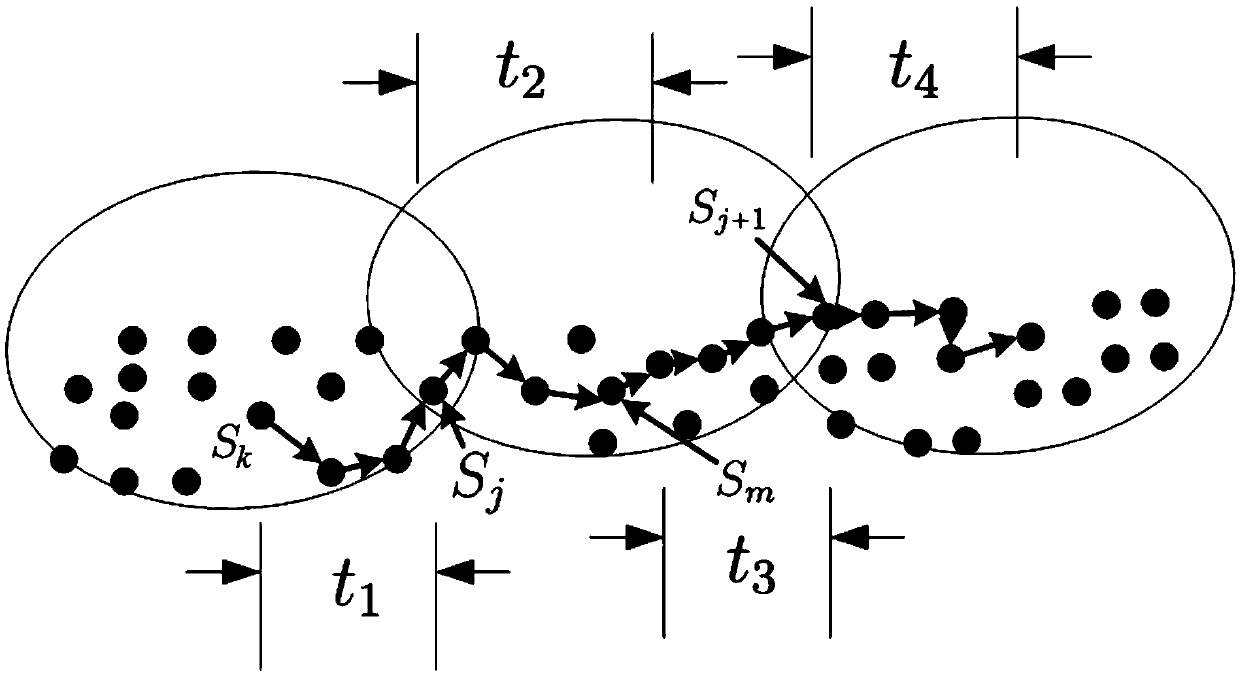Cluster-based peripheral boundary and coverage hole recognition method for wireless sensor network
A wireless sensor and coverage hole technology, applied in network topology, wireless communication, advanced technology, etc., can solve problems such as low algorithm complexity and prolonging the life cycle of wireless sensor networks
- Summary
- Abstract
- Description
- Claims
- Application Information
AI Technical Summary
Problems solved by technology
Method used
Image
Examples
Embodiment Construction
[0052] The present invention will be further described below in conjunction with drawings and embodiments.
[0053] The present invention provides a method for identifying peripheral borders and coverage holes of a cluster-based wireless sensor network, comprising the following steps:
[0054] (1) Let the node set of the wireless sensor network be Ω, confirm the k-hop neighbor nodes of each node in Ω, use N k (S i ) represents node S in Ω i The set of k-hop neighbor nodes of the wireless sensor network; if the set of boundary nodes of the wireless sensor network is known, denoted as B_Nodes, Each node in Ω is configured with a random counting unit Timer, and the Timer is randomly initialized to an arbitrary positive integer according to the node ID;
[0055] The k-hop neighbor nodes of each node in the wireless sensor network can be confirmed through the following process: each node in the wireless sensor network sends a request message containing its own ID and remaining ...
PUM
 Login to View More
Login to View More Abstract
Description
Claims
Application Information
 Login to View More
Login to View More - R&D
- Intellectual Property
- Life Sciences
- Materials
- Tech Scout
- Unparalleled Data Quality
- Higher Quality Content
- 60% Fewer Hallucinations
Browse by: Latest US Patents, China's latest patents, Technical Efficacy Thesaurus, Application Domain, Technology Topic, Popular Technical Reports.
© 2025 PatSnap. All rights reserved.Legal|Privacy policy|Modern Slavery Act Transparency Statement|Sitemap|About US| Contact US: help@patsnap.com



